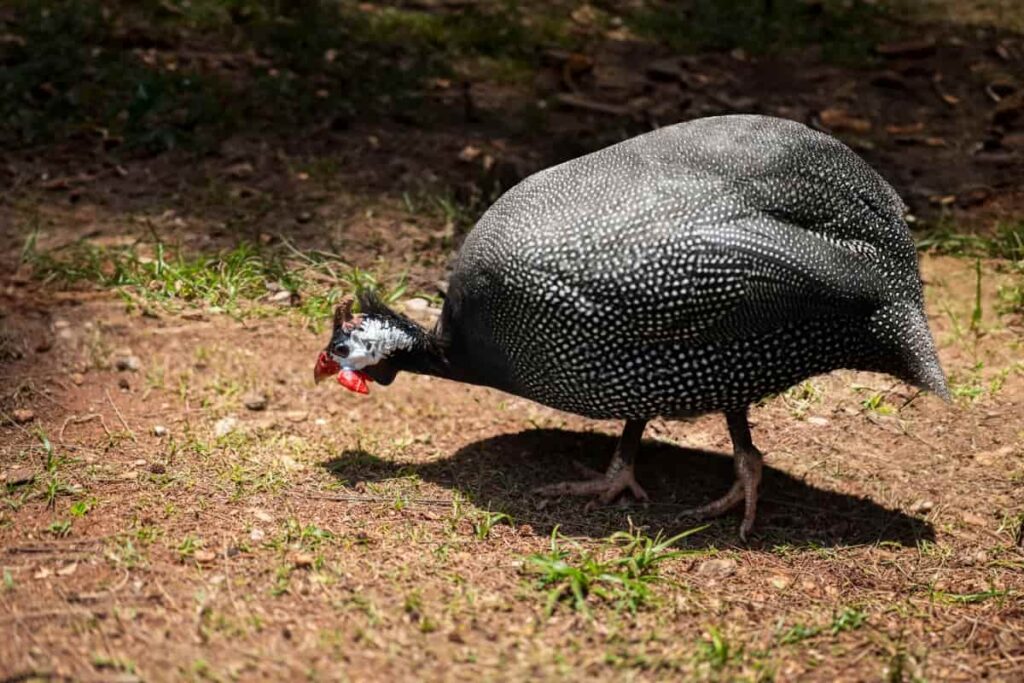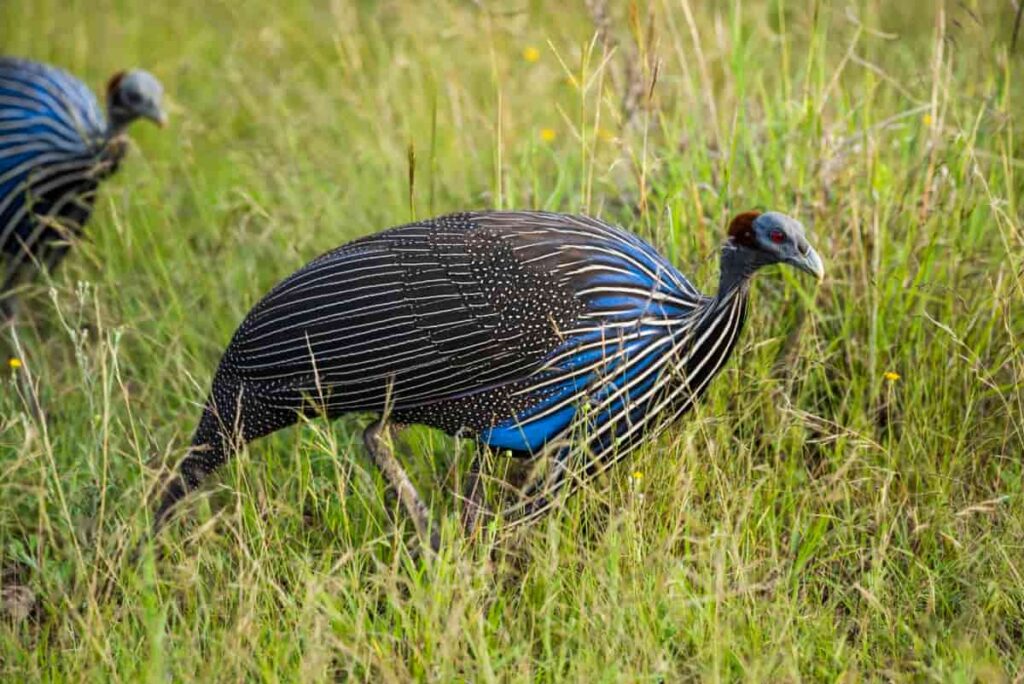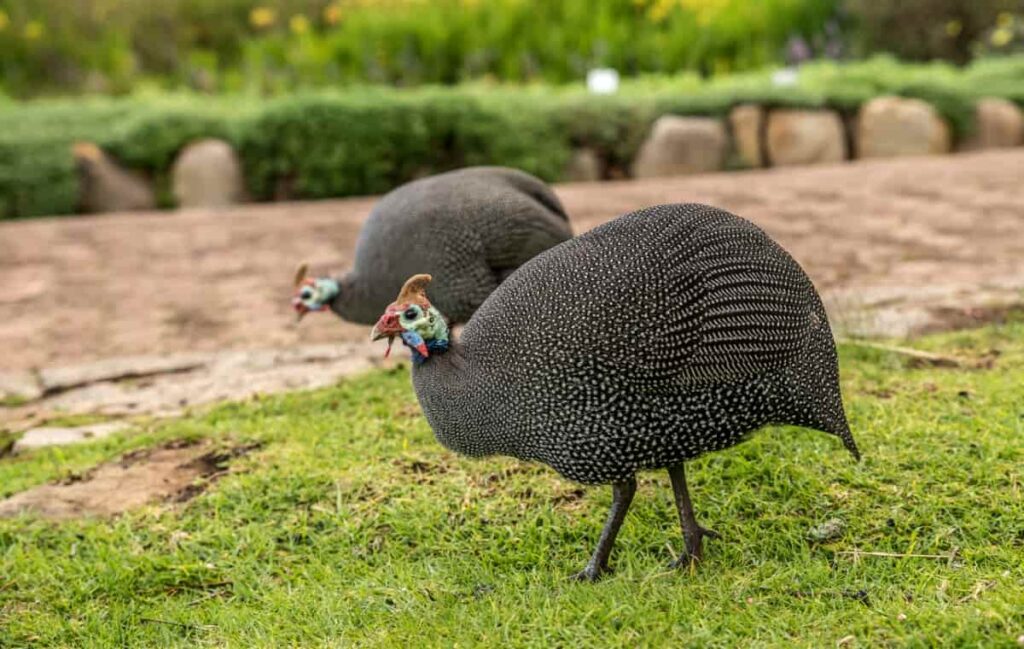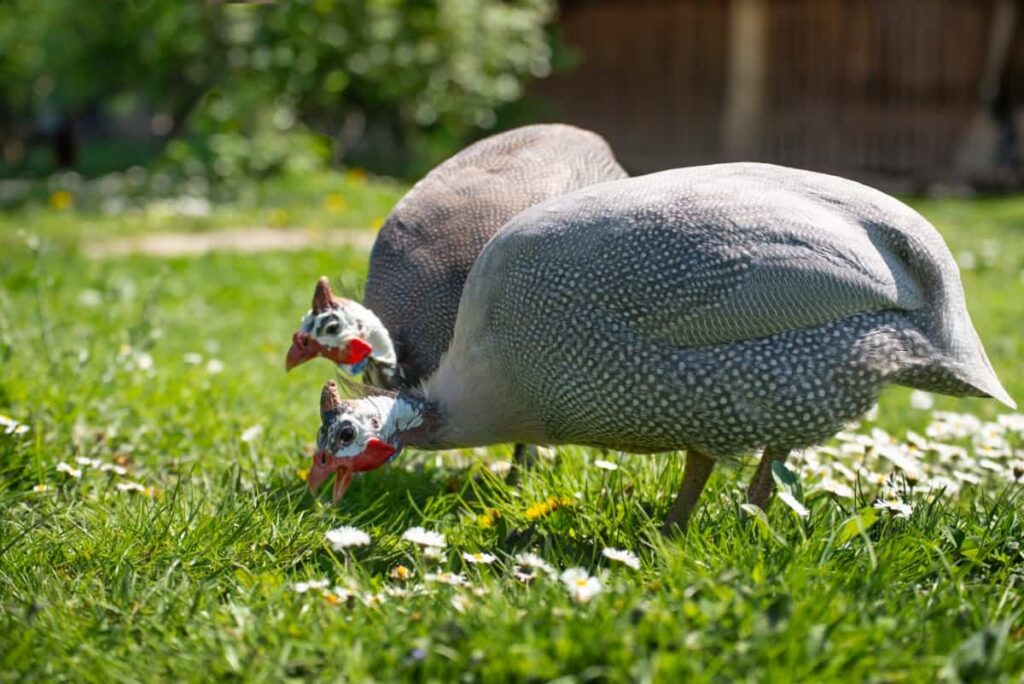These distinctive birds are not your average feathered friends. With a rich history and unique characteristics, Guinea Fowl has captured the interest of poultry enthusiasts worldwide. From their striking plumage to their quirky personalities, each variety of Guinea Fowl brings something special to the table.
Introduction to Guinea Fowl Varieties
Importance of Varieties
The importance of raising Guinea Fowl varieties lies in their versatility – from meat production to pest control and ornamental purposes, there is a suitable breed for every need. By selecting specific breeds based on intended use, farmers can optimize productivity while enjoying the beauty these birds bring to their surroundings.
Helmeted Guinea Fowl (Numida Meleagris)
Physical Characteristics
The Helmeted Guinea Fowl, scientifically known as Numida meleagris, is easily recognizable by its striking appearance. Helmeted Guinea Fowl have vibrant plumage with speckled feathers in shades of black and white. They sport a sleek body shape with long legs, making them agile runners and excellent foragers. Helmeted Guinea Fowl are medium-sized birds with strong legs ideal for scratching at the ground in search of food. Their robust build allows them to thrive in various environments, from open grasslands to wooded areas.
Behavioral Traits
These birds are known for their active and social nature, often moving in groups throughout the day. Observing them interact within their flock reveals a complex hierarchy where each bird has its place. Guinea Fowl are naturally curious creatures, always exploring their surroundings with great enthusiasm. These birds also exhibit playful antics among themselves, engaging in games like chasing each other or displaying elaborate courtship rituals during the breeding season.

Vulturine Guinea Fowl (Acryllium Vulturinum)
Appearance and Plumage
The Vulturine Guinea Fowl, with its striking appearance and unique plumage, stands out among its counterparts. This species showcases a distinct blue face adorned with vibrant red eyes, making it a sight to behold in the wild. Its long neck and upright posture exude elegance and grace while foraging for food.
Habitat and Distribution
Vulturine Guinea Fowl are native to the arid savannahs and scrublands of eastern Africa. They can be found in countries like Ethiopia, Kenya, Somalia, and Tanzania. Their distribution is primarily concentrated around areas with access to water sources like rivers or seasonal wetlands.

Crested Guinea Fowl (Guttera Pucherani)
Unique Features
The Crested Guinea Fowl stands out among its counterparts with its striking appearance and unique features. One of the distinctive characteristics of Crested Guinea Fowl is the elegant crest atop its head, adding to its demeanor. These crests are made up of elongated feathers that can be raised depending on the bird’s mood or level of alertness. The striking coloration and intricate patterns on their plumage make them a visually captivating addition to any flock.
Behavior in the Wild and Domestication
Guinea Fowl exhibit a strong sense of hierarchy within flocks, with dominant individuals leading the group and alerting others to potential dangers. Their wild instincts enable them to forage efficiently for food while remaining vigilant against predators. When domesticated, Guinea Fowl showcases remarkable adaptability to human environments.
Plumage Variations
Pied Guinea Fowl
The Pied Guinea Fowl stands out with its striking black and white speckled feathers, creating a beautiful mosaic pattern across its body. These unique markings make them a favorite among enthusiasts for their distinct appearance.
White Guinea Fowl
White Guinea Fowl exude elegance with their pristine snowy feathers that gleam under the sunlight. Their pure white coloration adds a touch of grace to any flock, making them a stunning addition to any backyard or farm setting.
Black Guinea Fowl
Black Guinea Fowls are known for their sleek and glossy feathers. Their dark plumage sets them apart from other varieties, showcasing a sense of depth and sophistication in their appearance.
Rare and Exotic Varieties
Porcelain Guinea Fowl
The unique coloring of soft blue-gray feathers speckled with white spots sets them apart from more common breeds. Porcelain Guinea Fowl add an elegant touch to any flock or farm, making them highly sought after by poultry enthusiasts and collectors alike. These striking birds are not only beautiful but also serve practical purposes such as pest control and ornamental display, blending functionality with aesthetics seamlessly.
Lavender Guinea Fowl
Lavender Guinea Fowl, with their striking coloration, are a sight to behold in any flock. Their soft lavender plumage sets them apart from the traditional guinea fowl varieties, adding a touch of elegance to your poultry collection. These unique birds make for a captivating addition to any farm or homestead. In addition to their practical purpose, Lavender Guinea Fowl can also be raised for ornamental and exhibition purposes due to their distinctive appearance.
Crossbreeds and Hybrids
Hybridization Practices
By carefully selecting parent birds with desirable traits, hybridization can result in new and unique combinations. This practice allows for the creation of guinea fowl that exhibit a mix of characteristics from different breeds. Hybrids may possess enhanced qualities like improved disease resistance or better egg-laying capabilities. It’s an exciting process that requires patience and expertise to yield successful results.
Characteristics of Crossbred Guinea Fowl
Crossbred Guinea Fowl possess a mix of traits from their parent breeds, offering a blend of characteristics that can be beneficial for various purposes. These hybrids may exhibit different plumage colors, sizes, and patterns, making them visually intriguing to enthusiasts.
Selecting Guinea Fowl Varieties for Different Purposes
Meat Production
Some breeds are known for their larger size and meat yield, making them ideal choices for those focused on raising fowl primarily for consumption. Look into breeds such as the Helmeted Guinea Fowl, French Guineas, or Jumbo Pearl Greys if you’re looking to maximize your meat production. These varieties tend to grow quickly and have a higher body weight compared to other Guinea Fowl breeds. Additionally, their taste is often described as rich and flavorful, making them popular among those who value high-quality poultry products.
Pest Control
Guinea fowl are nature’s little helpers for pest control. Their keen eyesight and quick movements make them excellent at catching insects like ticks, beetles, and even small rodents. If you’re looking to keep your garden or farm free from unwanted pests without the use of chemicals, Guinea Fowl is a sustainable and eco-friendly option. Different varieties of Guinea fowl may excel in pest control based on their foraging abilities and instincts. For example, the Helmeted Guinea fowl is known for its skill in hunting down insects while also being resilient against predators.

Ornamental and Exhibition Purposes
If ornamental or exhibition purposes are your focus, the Crested Guinea Fowl’s unique appearance might be just what you’re looking for. Their striking features make them stand out in any flock. These birds bring beauty and charm to any setting. Their intriguing behaviors and delightful personalities make them a joy to watch and care for.

Caring for Guinea Fowl Varieties
Housing and Enclosure Requirements
These birds are active and love to roam, so ample space is essential. A large outdoor area with access to shelter will keep them happy and healthy. Loud noises or predators can easily stress Guinea Fowl, so a secure coop or pen is necessary for their safety. Make sure the enclosure is predator-proof with proper fencing and covers to prevent any unwelcome visitors.
These birds are excellent foragers, so having a spacious outdoor area with grassy patches will allow them to exhibit their natural behavior of pecking and scratching for food. Providing fresh water daily is also important for their well-being.
Feeding and Nutritional Needs
These birds are omnivores, meaning they eat a mix of grains, seeds, insects, and vegetation. Guinea Fowl enjoy foraging for food on their own, but supplementing their diet with commercial poultry feed can help meet their nutritional requirements. Make sure the feed you choose has adequate protein content, as these birds have high protein needs. Fresh water should always be available for Guinea Fowl varieties to stay hydrated throughout the day.
Conclusion
Guinea Fowl varieties offer a fascinating array of options for poultry enthusiasts. Raising Guinea Fowl varieties comes with a myriad of benefits that make them a valuable addition to any farm or homestead. These unique birds are known for their excellent pest control abilities, as they have a knack for devouring insects like ticks, flies, and even small rodents.
- Aquaponic Farming at Home: A Step-By-Step Guide
- Profitable Village Farming Business Ideas in 2024
- High-Yield Aquaculture: Fast-Growing Fish for Farming
- Effective Fish Pond Construction Techniques for Beginners
- Irrigation and Water Management in Pineapple Farming
- Blossom to Harvest: Mastering Flowering and Pollination in Papaya Farming
- Pig Fattening Essentials: From Selection to Sale for Beginners
- Raising Wagyu Cattle: A Complete Guide for Premium Beef Production
- Soil Types and Their Water Holding Capacity
